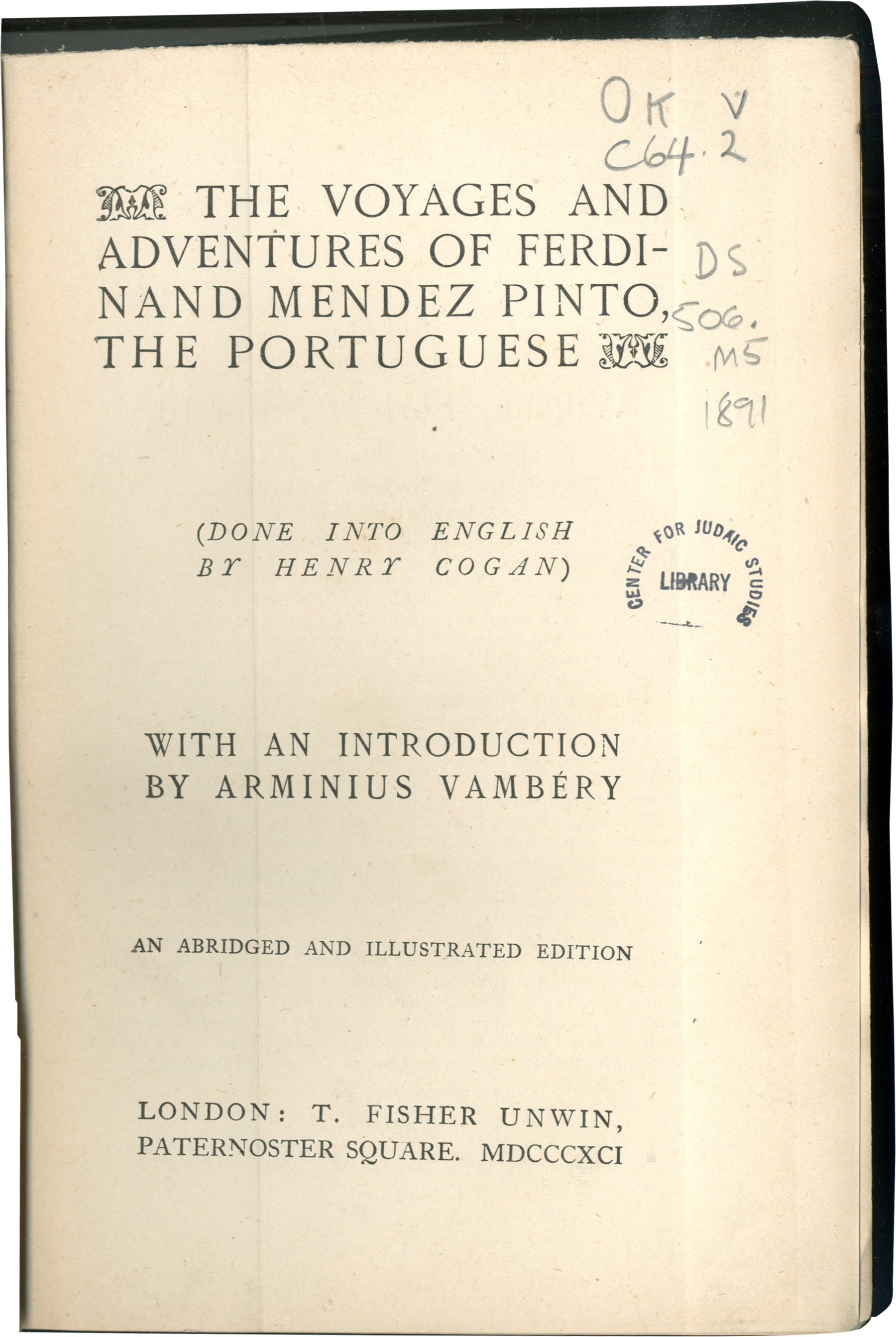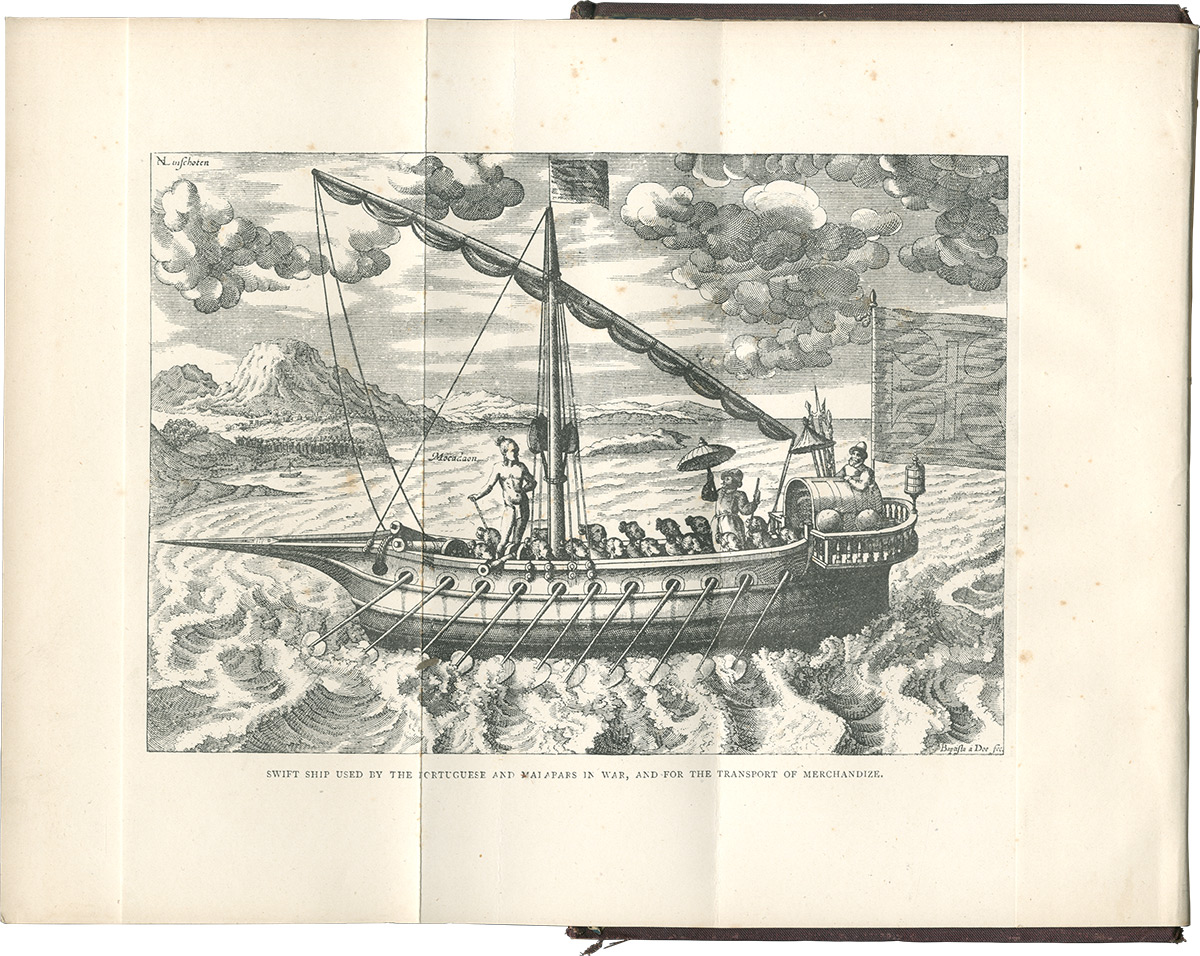The Voyages and Adventures of Ferdinand Mendez Pinto, the Portuguese is one of the best-known travelogues of all time. Pinto (who died in 1583) was the first European who described in writing what he saw and experienced during his travels in South East Asia. His manuscript was printed not only in the original Portuguese; the English edition in Henry Cogan's translation was published in London in 1663 and over the centuries several other translations and editions saw light. The Library at the Katz Center holds the 1897 English edition, which is an abridged version of the original Cogan translation and includes an introduction by the Hungarian Jewish orientalist Armin Vambery. Vambery, a self-taught Turkologist, traveler, and popular author of travelogues, stressed the importance of Pinto's book in advancing European knowledge about Asia in the early modern period. He also emphasized the saliency of travel in modern Oriental scholarship. His introduction illustrates that nineteenth-century orientalists believed that traveling complemented philological, archeological, and historical research. Like Pinto and Vambery, they wrote travelogues to inform readers about their experiences in far-away lands, educate European audiences about distant cultures, and, consequently, to popularize their scholarship. Publishing travelogues ensured a steady income, which allowed them to continue their scholarly research. In addition, for Jewish scholars like Vambery, the publication of travelogues and shorter reports about the Orient was an important means to claim membership in the modern European public sphere and demonstrate that not only fellow academics, but also the broader public found their research interesting.
Which exhibit?
Page: Featured item
Order on exhibit page
7
Turn off the details link on the exhibit page
Off

